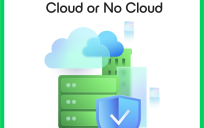This blog post is an excerpt from our recent industry perspective, Accelerating ICITE With Open Source. To read more, download the full paper here.
Intelligence agencies are confronting a common set of challenges as they proceed on the ICITE journey: They must migrate their applications and data assets to a community IC cloud so they can be shared with other IC member agencies and deployed at scale when necessary, even as they continue to run them in their own data centers for their own purposes. This open hybrid cloud arrangement offers the benefit of lower costs by sparing an organization the need to build, maintain and manage additional infrastructure to scale up applications when needed. It also offers a nearly unlimited ability to scale up and down as needed.
But an open hybrid cloud presents three common technical challenges to IT managers across the IC. First, they need to optimize their data center-based apps for the cloud. Second, they need to ensure their apps are properly synched up with the appropriate data, no matter where those apps are running. And third, they need to easily monitor and manage their apps as they run in any environment, whether that’s a cloud or private data center.
Fortunately, because of the intrinsic benefits that come with open standards and open-source software — namely, flexibility, innovation and a community-based approach to problem-solving — there are solutions to these problems.
Let’s walk through each of these challenges:
Challenge No 1: Preparing Legacy Applications for the Cloud
Applications designed to run in a private data center have to be reconfigured to run in a dynamic and scalable cloud infrastructure. OpenShift Enterprise 3, Red Hat’s Platform as a Service offering, does this by harnessing open standards and open-source software — primarily centered on Docker container technology and Google’s Kubernetes container-management technology — to quickly develop, package, deploy and scale applications in the cloud. Container technology essentially provides an envelope around an application or microservice software that provides it all of the needed support — code, runtime, system tools and system libraries —to be production- ready in any environment. “OpenShift future-proofs your applications when you refactor them for the cloud so they can run in your data center and in any of the clouds that you choose to run them in,” said Do. In the case of legacy apps, Callaway said, “It’s just a matter of containerizing it, and that’s not difficult. We have been doing workshops for IC employees and integrators around the basics, and those are very popular. We’ve been doing these two to three times a month — there’s so much demand for people to learn how to do this. So adopting these industry standards immediately opens up an enormous ecosystem of things that are out-of-the-box compatible with OpenShift.” OpenShift is already installed or will soon be installed at every IC agency, so this capability already exists. OpenShift is highly mature, supporting more than 2.3 million apps and more than 1 billion page views per day. There are three varieties of OpenShift: an online public PaaS called OpenShift Online; a private, on-premise PaaS called OpenShift Enterprise and an open-source community PaaS called OpenShift Origin.
Challenge No. 2: Ensuring Your Apps in the Cloud Are Synched Up With the Correct Data – Also Known as Preventing ‘Data Lock-in’
When moving an application from the data center to the cloud, ti’s important that the data storage it relies on also remains accessible and synchronized to that cloud-based app. But data is often stored in proprietary storage systems in the data center, so migrating that data to where it is needed in the cloud is a difficult, if not impossible, process. The solution is to move from physical-based storage to open-source software-defined storage solutions so your data can follow the app in whatever IT infrastructure it runs in. If your challenge is to provide file-based data support to a legacy app that is being migrated to the cloud, for example, then Red Hat Gluster Storage can help. This scale-out storage platform can aggregate numerous small storage files into a consolidated single Global Namespace for easier deployment on premise or in a public or hybrid cloud. This means that wherever your apps are running, your file storage can remain connected. This is particularly well-suited for such workloads as enterprise virtualization, big data analytics and rich media. Many IC applications also depend on object and block storage, which are ideal protocols for a modern cloud architecture. But that storage may have special needs because it cannot run on a commercial cloud, such as the Amazon C2S, due to geographical limitations or data sensitivity constraints. In this case, an open-source software-defined storage solution called Red Hat Ceph can provide the same lightning-fast, highly scalable performance found in a commercial cloud, but with the advantage of being able to service regions and data-sensitivity levels that are off limits for C2S or other commercial cloud offerings.
Challenge No. 3: Seeing and Managing Applications Running in Multiple Infrastructures
When running applications from an on-premise data center, the IC GovCloud, the C2S cloud or another infrastructure, IT operations teams need to be able to monitor and manage those applications and their underlying foundations. A good solution for this is Red Hat Cloud- Forms, an award-winning open-source cloud management platform that provides single-pane-of-glass views of all infrastructure resources and the applications running on them. This provides the agency CIO or IT operations team the ability to look across Amazon, OpenStack, Red Hat, VMWare, Microsoft and other major software infrastructures to see and manage those resources and the applications running on them. CloudForms enables tasks such as workload discovery, event capture, infrastructure monitoring and management and workload provisioning, among others.






Leave a Reply
You must be logged in to post a comment.